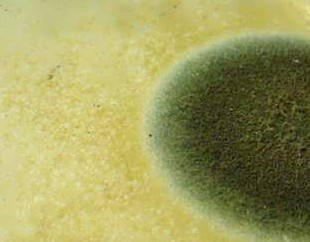The majority of specialized mushrooms are cultivated on sterile substrates, so once a contamination establishes itself, it thrives in the absence of other contaminants for food. In nature, hundreds of different fungi, bacteria, nematodes, and other organisms interact intricately to preserve an ecological balance.
The cultivator creates favorable conditions for the contamination to thrive in a sterilized environment. In sawdust bags, contamination typically occurs when another fungus grows on the waste materials, the cultured fungus’s remnants, or occasionally its active mycelium or fruiting body. The cultured fungus itself is the only thing that they have to contend with.
If you grow mushroom you’re GOING to run into contamination. It’s all around us. We breath in multiple millions of spores and bacteria everyday and those same spores and bacteria are ready to float into an agar plate, jar of grain or monotub. The contamination that you’re trying to avoid, in most cases, thrive in the same conditions as the mycelium you’re growing. Being sanitary is of the utmost importance, but even then, sometimes contamination still finds a way in.
There’s lot of different contamination out there, we won’t try to cover them all. We will focus on the most common of them.
Bacteria aka Bacillus
This bacteria will make your grain look very wet/slimy and has a pungent smell. Avoid breathing in any time of germinated bacteria of contamination, they can be highly irritable to your lungs. When you see bacteria on an agar plate it will look like a cloudy blob and is easy to tell it’s not mycelium.
The spores of this bacteria are very resilient. They can even withstand the high heat of pressure cooking.
So, you might be wondering how can you stop them if they can survive your pressure cooker. Here’s how. You just need to soak your grain a day. When the grain is immersed in the water it will trigger the bacterial endospores to germinate. The germinated spores aren’t as resilient to heat and will die during pressure cooking.
Pro Tip: Let your pressure cooker build up pressure and steam off for 15 minutes before placing your 15 lb rocker on top of the valve. This will help push pesky contaminants out of your pot. Then remember, when pressure cooking grain it needs to be at 15 psi for a full 90 minutes. If you’re pressure cooking a hardwood substrate you need to keep it at 15 psi for 2.5 hours.
It is possible for a good culture of mycelium to overtake bacteria. Even though it’s possible, don’t take chances. The best way to beat this bacteria is to soak your grain for at least 12 hours before pressure cooking it.
As with any contamination, it’s best to keep it away from your healthy cultures. It’s possible for the bacteria to sporulate and spread to other areas in your lab.
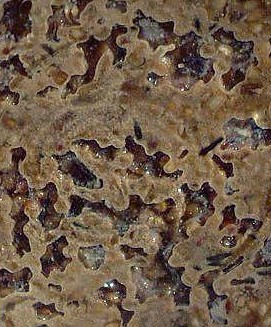
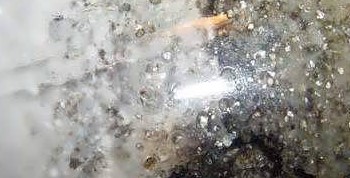
Bacterial Blotch aka Pseudomonas tolaasii
On mushrooms, lesions range from yellow to brown. Spotting typically happens at or close to the margin of mushroom caps. Blotch happens when mushrooms are moist for too long (4 to 6 hours or more) after water application. Particles of soil that are in the air carry the bacterium. Reduced humidity and irrigation with chlorine solution of 150 ppm are two examples of ways to negate this bacteria.
However, if the mushroom is left wet, chlorine has little impact because the bacterial grows quickly enough to counteract the oxidizing effects. Sanitation is an essential part of keeping this at bay.
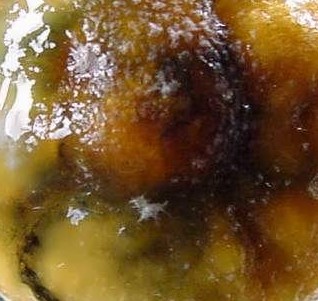
Cobweb mold aka Dactylium Mildew
Over the substrate, a cottony mycelium develops. When it comes into touch with a mushroom, the mycelium quickly surrounds the mushroom with a soft, mildewed mycelium, resulting in a soft rot.
Compared to mycelium, cobweb mold is much darker—almost gray.
There are other indicators that tell you it’s Cobweb, but the rate of growth stands out. Within a day or two, a one inch patch can quickly cover an entire jar or casing. Cobweb mold is made up of extremely tiny strands and is easy to tell apart from mycelium because your myc has more of a string or rope look to it.
High humidity encourages the growth of cobweb mold. Increasing air circulation and reducing humidity to stop this bacteria from thriving.
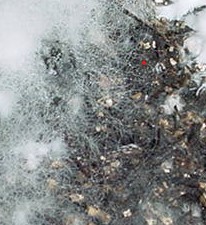
Trichoderma harzianum aka The Green Mold
Trichoderma is a green mold that feeds on other mycelium fungi and may be identified by its vivid green hue while spores are forming. Trichoderma is one of the easiest to spot among all the contamination kinds you could come across, especially after sporulation, and one of the hardest to contain. The most prevalent, Trichoderma harzianum, is known to develop an aggressive white mycelium that causes soft rot in mushrooms before it sporulates into a vivid green color.
Trichoderma must be located and eliminated before it sporulates in order to salvage your crop. This is a difficult but essential task. It can resemble mycelium at this stage of its life cycle. Take note of the trichoderma’s thick, fluffy appearance as it emerges through the substrate. This is not how mycelium looks. Mycelium, on the other hand, resembles rope more and adheres firmly to the substrate.
It’s pretty much impossible to contain or eradicate but if you really want to try, you’ll want to use salt. Spread it directly on the trich. Personally, if I see trich I abandon the grow and get it away from my lab. Trich is very hard to contain once it sporulates. I can get into everything, even petri dishes with lids on them. Don’t take too many chances with this mold.
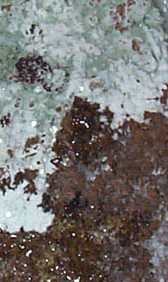
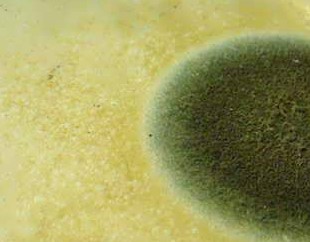
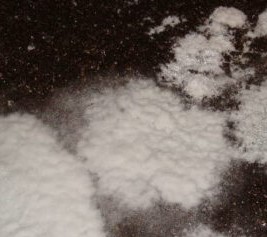
Where does the contamination come from???
Mostly it comes from us. We humans are infested with contamination. It’s part of our daily lives. Most of it is microscopic and we pay absolutely no attention to it. We breath, it, eat it, sleep with it, etc. Your sterile technique is imperative to get right if you want to grow without contamination. Be vigilant using 70% isopropyl alcohol or a bleach mixture of 10 parts water to 1 part bleach. There’s other recipe you can find as well, but these two are very effective.
If you’re clean, then the next place to be sure to keep sterile is your substrate. Make sure you know when to sterilize or when to pasteurize your substrates. Don’t take short cuts and always find reliable teks.
If you want to watch videos on mushroom growing go check out this youtube channel. Great content that’s easy to follow.
If you want to learn about how to make a SAB (still air box) check out this article
Are you looking for an affordable Laminar Flow Hood? Here’s the cheapest one I’m aware of, great for new growers.

